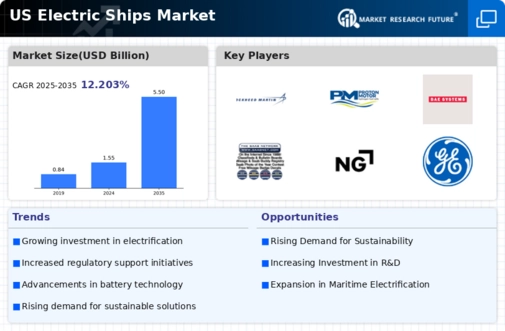US Europe Electric Ships Market Summary
The US Electric Ships market is projected to expand significantly from 1.55 USD Billion in 2024 to 5.5 USD Billion by 2035.
Key Market Trends & Highlights
US Electric Ships Key Trends and Highlights
- The market is expected to grow at a compound annual growth rate of 12.2 percent from 2025 to 2035.
- By 2035, the market valuation is anticipated to reach 5.5 USD Billion, indicating robust growth potential.
- In 2024, the market is valued at 1.55 USD Billion, reflecting the increasing interest in electric ship technology.
- Growing adoption of electric propulsion systems due to environmental regulations is a major market driver.
Market Size & Forecast
| 2024 Market Size | 1.55 (USD Billion) |
| 2035 Market Size | 5.5 (USD Billion) |
| CAGR (2025-2035) | 12.2% |
Major Players
Lockheed Martin, General Dynamics, Proton Motor Fuel Cell, Wärtsilä, BAE Systems, Robert Allen Ltd, SAAB, MTU Friedrichshafen, Vard Holdings, Damen Shipyards, Northrop Grumman, General Electric, Kongsberg Gruppen, Edison Chouest Offshore



















Leave a Comment